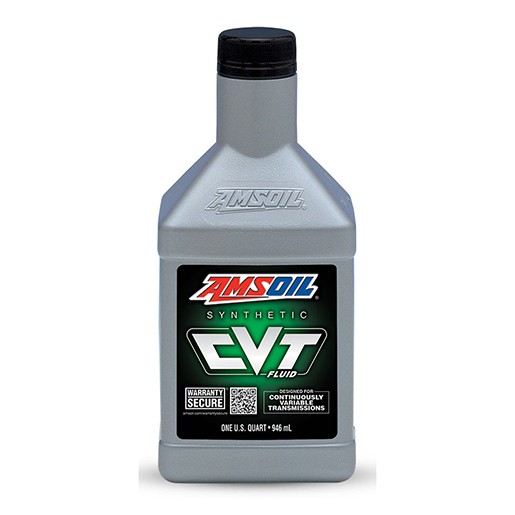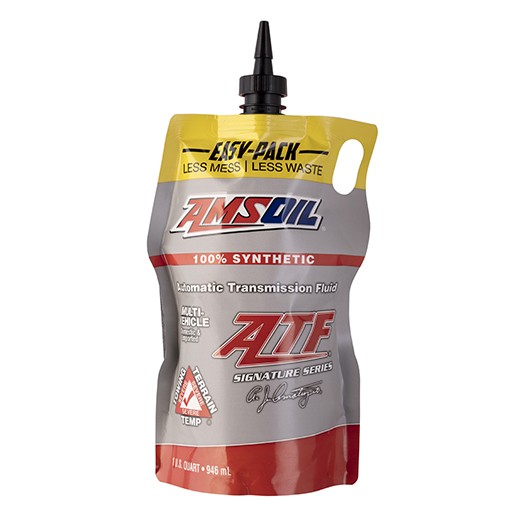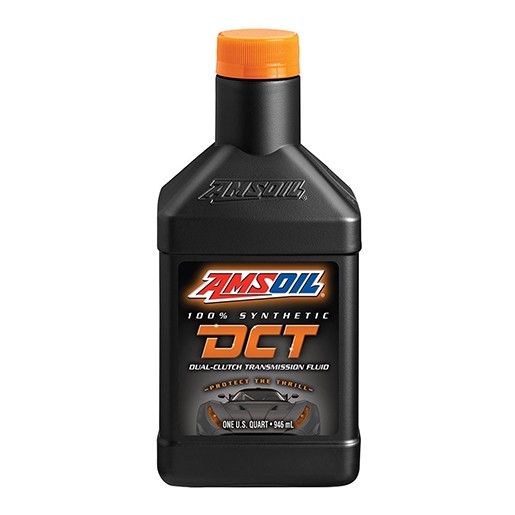How Often Should You Change Your Transmission Fluid? Expert Tips
Maintaining your vehicle’s transmission is crucial for ensuring optimal performance and longevity, yet it often takes a backseat in routine maintenance discussions. One of the essential aspects of this upkeep is knowing how often to change your transmission fluid. Regularly replacing this fluid not only prevents costly repairs but also enhances your vehicle’s efficiency and responsiveness. In this article, we’ll dissect expert tips and guidelines to help you navigate the ins and outs of transmission fluid maintenance. From understanding the signs that it’s time for a change to determining the right intervals for your specific make and model, we’ve got you covered. Whether you’re a seasoned car enthusiast or a casual driver, learning about transmission fluid can empower you to take charge of your vehicle’s health and performance. Let’s dive in and ensure your car runs smoothly for years to come!
Understanding Transmission Fluid: What It Is and Its Role
Transmission fluid is a specially formulated lubricant that serves multiple roles within your vehicle’s
transmission system. Its primary function is to lubricate the various moving parts within the transmission,
reducing friction and wear. This fluid also helps to cool the transmission by transferring heat away from the internal components, preventing overheating and ensuring that the system operates within safe temperature ranges. Additionally, transmission fluid acts as a hydraulic fluid, facilitating the smooth engagement and disengagement of gears, which is crucial for both automatic and manual transmissions.
The composition of transmission fluid varies depending on whether you have an automatic or manual
transmission. Automatic transmission fluid (ATF) contains additives that are designed to improve its heat
resistance, oxidation stability, and ability to clean and protect the transmission’s internal surfaces. In contrast, manual transmission fluid typically has a simpler composition but is equally essential in maintaining the transmission’s performance and longevity. Regardless of the type, using the correct transmission fluid for your vehicle is vital for optimal functioning.
Understanding the role of transmission fluid underscores its importance in vehicle maintenance. Neglecting to monitor and change this fluid can lead to a host of problems, including poor shifting performance, increased wear and tear on transmission components, and ultimately, costly repairs. By prioritizing transmission fluid maintenance, you’re taking a proactive step toward ensuring your vehicle’s longevity and reliability.
Signs That Your Transmission Fluid Needs Changing
Recognizing the signs that your transmission fluid needs changing can save you from more extensive and
expensive repairs down the line. One of the most common indicators is a noticeable change in the color and consistency of the fluid. Fresh transmission fluid is typically a bright red or pink color and has a slightly sweet smell. Over time, it can become dark brown or even black, often accompanied by a burnt odor. This discoloration and smell indicate that the fluid has degraded and is no longer performing its essential functions effectively.
Another sign that your transmission fluid may need changing is unusual noise coming from the transmission. If you hear grinding, whining, or clunking sounds when shifting gears, it could be a sign that the transmission fluid is low or contaminated. These noises suggest that the transmission components are not being adequately lubricated, leading to increased friction and wear. Addressing this issue promptly by checking and changing the fluid can help prevent further damage.
You might also notice a decrease in transmission performance, such as delayed or rough shifting. If your
vehicle hesitates or jerks when changing gears, it could be a sign that the transmission fluid is not providing the necessary hydraulic pressure for smooth gear engagement. In some cases, the vehicle may even slip out of gear unexpectedly. These symptoms should not be ignored, as they can indicate serious transmission issues that require immediate attention. Regularly monitoring and changing your transmission fluid can help maintain optimal performance and prevent these problems from escalating.

Recommended Transmission Fluid Change Intervals
Determining the ideal interval for changing your transmission fluid can be challenging, as it depends on
several factors, including your vehicle’s make and model, driving conditions, and the type of transmission fluid used. Generally, manufacturers provide specific recommendations in the owner’s manual, which should be your primary reference. For automatic transmissions, the typical interval ranges between 30,000 to 60,000 miles. However, some vehicles with newer, more advanced transmissions may have extended intervals up to 100,000 miles or more.
Manual transmissions often have different maintenance schedules, with recommended fluid change intervals typically ranging from 30,000 to 50,000 miles. It’s essential to consult your owner’s manual or a trusted mechanic to determine the appropriate interval for your specific vehicle. Following these guidelines can help ensure that your transmission fluid remains effective and that your transmission operates smoothly and efficiently.
It’s also important to consider your driving habits and conditions when determining the optimal transmission fluid change interval. Vehicles subjected to severe driving conditions, such as frequent towing, heavy loads, or stop-and-go traffic, may require more frequent fluid changes. These conditions can cause the transmission to work harder and generate more heat, leading to faster fluid degradation. In such cases, it may be advisable to change the transmission fluid more frequently than the manufacturer’s recommendations to maintain optimal performance and prevent potential issues.
Factors Affecting Transmission Fluid Longevity
Several factors can influence the longevity of your transmission fluid, including driving habits, environmental conditions, and the type of fluid used. Aggressive driving, such as rapid acceleration and hard braking, can cause the transmission to work harder, generating more heat and accelerating fluid degradation. Similarly, driving in hilly or mountainous terrain can place additional strain on the transmission, leading to increased wear and the need for more frequent fluid changes.
Environmental factors, such as extreme temperatures, can also impact transmission fluid longevity. High
ambient temperatures can cause the transmission to overheat, leading to faster fluid breakdown. Conversely, extremely cold temperatures can cause the fluid to thicken, reducing its ability to flow and lubricate the transmission components effectively. In both cases, it’s essential to monitor the condition of your transmission fluid and adjust your maintenance schedule accordingly to ensure optimal performance.
The type of transmission fluid you use can also affect its longevity. High-quality synthetic transmission fluids tend to have better heat resistance, oxidation stability, and overall performance compared to conventional fluids. As a result, they may provide longer service intervals and better protection for your transmission. However, it’s crucial to use the fluid recommended by your vehicle’s manufacturer, as using the wrong type can lead to poor performance and potential damage. By considering these factors and staying vigilant about your transmission fluid maintenance, you can help ensure your vehicle’s transmission remains in top condition.
How to Check Your Transmission Fluid Level
Regularly checking your transmission fluid level is a simple yet crucial task that can help maintain your
vehicle’s performance and prevent potential issues. To begin, make sure your vehicle is on a level surface and the engine is warmed up. For most vehicles, the transmission fluid should be checked with the engine running and the transmission in the “Park” or “Neutral” position. Refer to your owner’s manual for specific instructions, as the procedure can vary depending on your vehicle’s make and model.
Locate the transmission dipstick, which is usually found near the back of the engine bay. Carefully remove the dipstick and wipe it clean with a lint-free cloth. Reinsert the dipstick fully and then remove it again to check the fluid level. The dipstick will have markings indicating the optimal fluid level range. If the fluid level is below the recommended range, you may need to add transmission fluid. Be sure to use the correct type of fluid as specified in your owner’s manual.
In addition to checking the fluid level, it’s essential to inspect the condition of the transmission fluid. Fresh fluid is typically a bright red or pink color, while degraded fluid may appear dark brown or black and have a burnt smell. If you notice any discoloration or unusual odor, it may be time to change the fluid. Regularly monitoring your transmission fluid level and condition can help you stay ahead of potential issues and ensure your vehicle’s transmission remains in optimal working order.
The Process of Changing Transmission Fluid
Changing your transmission fluid is a vital maintenance task that can be performed by a professional mechanic or, for those with some mechanical know-how, as a DIY project. The process begins with gathering the necessary tools and materials, including the correct type and amount of transmission fluid, a transmission fluid filter (if applicable), a drain pan, a funnel, and basic hand tools. It’s also a good idea to have a service manual for your vehicle on hand to guide you through the specific steps.
To start, lift your vehicle using a jack and secure it with jack stands to ensure safety. Locate the transmission fluid pan beneath your vehicle and place the drain pan underneath it. Carefully remove the bolts securing the pan, allowing the old fluid to drain out. Once the fluid has drained completely, remove the pan and clean it thoroughly. If your vehicle has a transmission fluid filter, now is the time to replace it. Install the new filter according to the manufacturer’s instructions and reattach the fluid pan, ensuring all bolts are tightened securely.
With the pan reinstalled, you can now add the new transmission fluid. Locate the transmission fluid fill port, which is typically found near the dipstick tube. Using a funnel, slowly pour the new fluid into the fill port, taking care not to overfill. Once you’ve added the correct amount of fluid, start your engine and let it run for a few minutes to allow the fluid to circulate. Check the fluid level again and top off if necessary. Finally, take your vehicle for a short test drive to ensure the transmission is functioning smoothly. By following these steps, you can help maintain your vehicle’s transmission performance and longevity.
Common Myths About Transmission Fluid Changes
There are several common myths and misconceptions surrounding transmission fluid changes that can lead to confusion and potential issues if not addressed. One prevalent myth is that transmission fluid never needs to be changed. While it’s true that some modern vehicles have extended service intervals, transmission fluid still degrades over time and requires periodic replacement to maintain optimal performance. Ignoring fluid changes can result in poor shifting, increased wear, and costly repairs.
Another myth is that a transmission flush is always better than a fluid change. While a transmission flush can be beneficial in some cases, it involves using a machine to forcefully remove all old fluid and contaminants from the system. This process can sometimes dislodge debris and cause blockages or damage to internal components. In contrast, a standard fluid change involves draining and replacing a portion of the fluid, which is often sufficient for routine maintenance. It’s essential to consult your owner’s manual or a trusted mechanic to determine the best approach for your specific vehicle.
Some people believe that using a higher-grade or synthetic transmission fluid will automatically improve
performance, regardless of the manufacturer’s recommendations. While high-quality synthetic fluids can offer better heat resistance and longevity, it’s crucial to use the fluid type specified in your owner’s manual. Using the wrong fluid can lead to poor performance, shifting issues, and potential damage to your transmission. By dispelling these myths and following proper maintenance guidelines, you can help ensure your vehicle’s transmission remains in top condition.
The Benefits of Regular Transmission Fluid Maintenance
Regular transmission fluid maintenance offers numerous benefits that can significantly enhance your vehicle’s performance and longevity. One of the most notable advantages is improved shifting performance. Fresh transmission fluid ensures that the internal components are adequately lubricated, reducing friction and wear. This results in smoother and more responsive gear changes, enhancing your overall driving experience.
Another key benefit of regular transmission fluid maintenance is the prevention of costly repairs. Over time, degraded fluid can lead to increased wear and tear on transmission components, potentially causing damage that requires expensive repairs or even a complete transmission replacement. By regularly monitoring and changing your transmission fluid, you can help prevent these issues and extend the life of your transmission.
Regular transmission fluid maintenance also contributes to better fuel efficiency. A well-maintained
transmission operates more efficiently, reducing the amount of energy required to transfer power from the engine to the wheels. This can result in improved fuel economy, saving you money at the pump. Additionally, maintaining your transmission fluid can help prevent overheating, which can cause further damage and reduce overall vehicle performance. By prioritizing transmission fluid maintenance, you can enjoy these benefits and ensure your vehicle remains in optimal working order.
Choosing the Right Transmission Fluid for Your Vehicle
Selecting the correct transmission fluid for your vehicle is crucial for maintaining optimal performance and preventing potential issues. The first step in choosing the right fluid is to consult your owner’s manual, which will provide the manufacturer’s recommendations for the specific type and grade of fluid required. Using the wrong type of fluid can lead to poor performance, shifting issues, and even damage to your transmission.
There are several types of transmission fluid available, each designed for different types of transmissions and driving conditions. Automatic transmission fluid (ATF) is formulated to meet the unique demands of automatic transmissions, providing the necessary lubrication, cooling, and hydraulic functions. Manual transmission fluid, on the other hand, is typically a thicker, more viscous fluid designed to protect the gears and bearings in manual transmissions. Additionally, some vehicles require specialized fluids, such as continuously variable transmission (CVT) fluid or dual-clutch transmission (DCT) fluid, which are specifically engineered for those transmission types.
In addition to choosing the correct type of transmission fluid, it’s essential to consider the quality of the fluid you select. High-quality synthetic fluids often offer better performance, heat resistance, and longevity compared to conventional fluids. However, it’s crucial to ensure that any fluid you choose meets the specifications outlined in your owner’s manual. By selecting the right transmission fluid for your vehicle and adhering to the manufacturer’s recommendations, you can help ensure your transmission operates smoothly and efficiently.
Conclusion: Ensuring Optimal Vehicle Performance
In conclusion, maintaining your vehicle’s transmission fluid is a crucial aspect of ensuring optimal
performance and longevity. By understanding the role of transmission fluid, recognizing the signs that it needs changing, and following the recommended maintenance intervals, you can help prevent costly repairs and enhance your vehicle’s efficiency and responsiveness. Factors such as driving habits, environmental conditions, and the type of fluid used can all impact the longevity of your transmission fluid, making it essential to stay vigilant and proactive in your maintenance efforts.
Regularly checking your transmission fluid level and condition, as well as understanding the process of
changing the fluid, can empower you to take charge of your vehicle’s health. Dispelling common myths about transmission fluid changes and prioritizing regular maintenance can significantly improve shifting
performance, prevent costly repairs, and contribute to better fuel efficiency. Additionally, choosing the right transmission fluid for your vehicle ensures that your transmission operates smoothly and efficiently.
By following these expert tips and guidelines, you can help ensure your vehicle runs smoothly for years to
come. Proper transmission fluid maintenance not only enhances your driving experience but also contributes to the overall reliability and longevity of your vehicle. Take the time to prioritize this essential aspect of vehicle maintenance, and you’ll reap the benefits of a well-maintained transmission and optimal vehicle performance.




